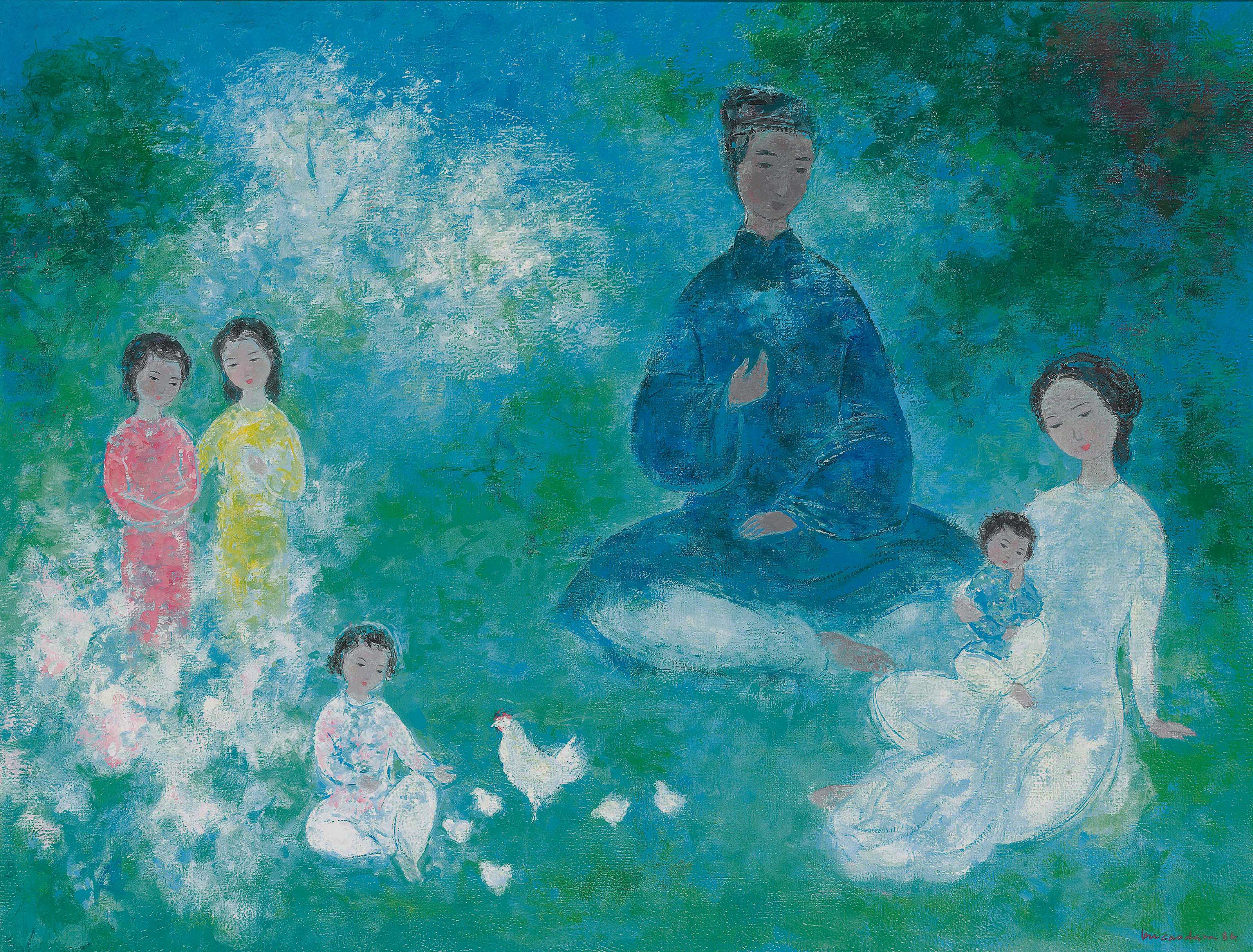VU CAO DAM: A GENTLEMAN OF PASSION
What struck me most when I had the immense honour to meet Vu Cao Dam, was his incredible distinction. His frail silhouette, his refreshing smile: he was direct, humble but proud with a compassionate smile. If I did not already know I was in his house in Saint-Paul de Vence on the French Riviera, I would have easily believed we were in Hanoi; in an early morning when fresh air would welcome the first glow of light just before the day and life begins renewed again. At his side was René, his lively, attentive, beautiful wife whom he married in 1938.
When you spend time with Vu Cao Dam in an absorbing discussion of his art in search for meaning and inspiration, great modesty and attention are requested as the painter irradiates not only talent but mostly humility and serenity, the luxury of an artist who believes steadfastly in his craft and work.
One year after he passed away, I happened to discover on a cold November morning in 2001, in Victor Tardieu's family archives, a letter dated 10 January 1934 by Blanchard de la Brosse, the then Director of Agindo (Economic Agency of Indochina) to Victor Tardieu the contents on which was stated:
"Vu Cao Dam cannot vegetate in Paris and it would only be helping him if we offered him a job in Tonkin. I am convinced that once he will return to his familiar surroundings, he will become a great artist and would be an excellent teacher in sculpture".
The words were not to prove prophetic however as Vu Cao Dam settled in France, never returned to his home land, yet achieved quiet acclaim for his extraordinary talent.
Vu Cao Dam was through his work a great pictorial historian for Vietnam: his five major works represented here are the perfect example in a great diversity of subjects as perhaps compared to his friends Le Pho and Mai Trung Thu.
Several themes representing several cultural strata are presented in this selection.
The painter expresses all of his well-educated Confucian soul in La Famille (Lot 420) where the aegis of family is well celebrated as a central theme.
He references Kim Van Kieû , a poetic saga (written by Nguyen Du, 1765-1820) that for many represents the very emblem of the deepest Vietnamese soul, and is where Le Rendez-vous (The Meeting) (Lot 421) are part of the story.
Buddhism is not forgotten in Divinité en Rouge (Divinity in Red) (Lot 422) with a deity figure, here in vitarka and dhyana asana, where a particularly blue sky and flowers that are not the traditional lotus make it a universal motif.
The cockfight, a local and popular tradition belonging to the cultural community throughout Indochina, Indonesia and South China is captured by Vu Cao Dam (Lot 423), in this rare subject, rendering perfectly the violence and the exuberance of the spectacle.
Finally, Vu Cao Dam offers us a beautiful view of Saint-Paul de Vence (Lot 424), a rare art piece not only in his corpus but also in the general work of foreign painters alive in France who rarely depict their host country. It is in this village that he settled in 1959 and stayed till his death.
It was a long time ago when I asked Le Pho in Paris: "Master, for you who is the greatest Vietnamese artist ?"
His reply was as quick as assertive: "Vu Cao Dam".
There is no doubt that the works presented here confirm this.
Jean-François Hubert
Senior Expert, Vietnamese Art











